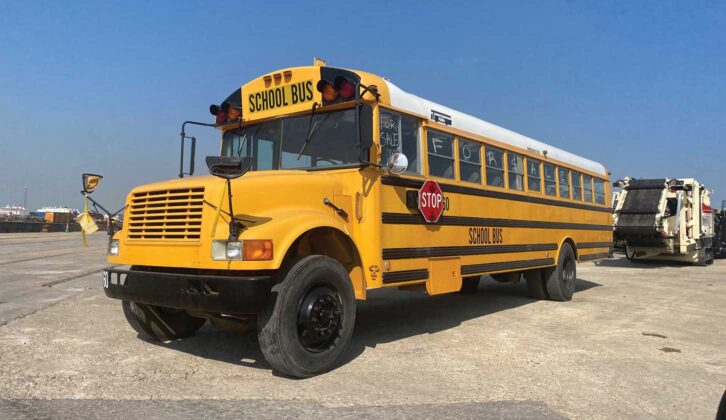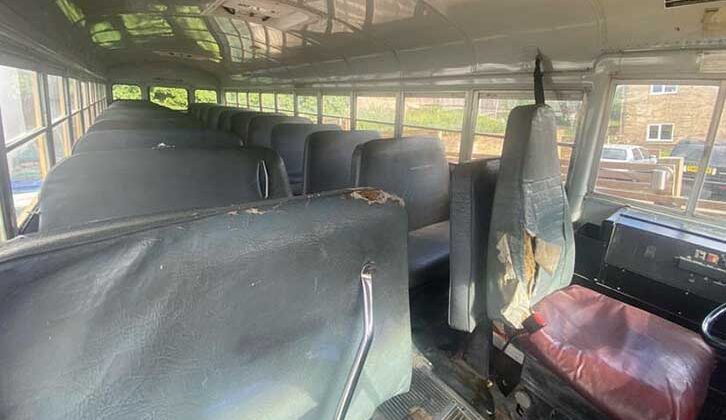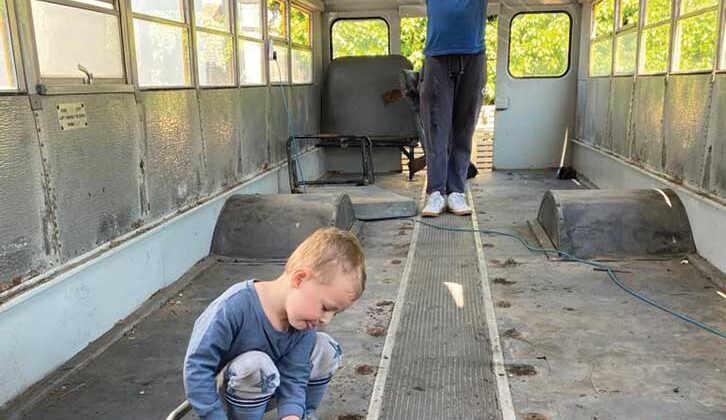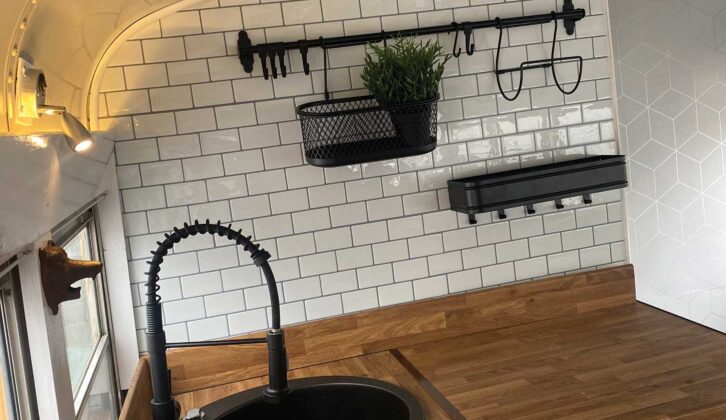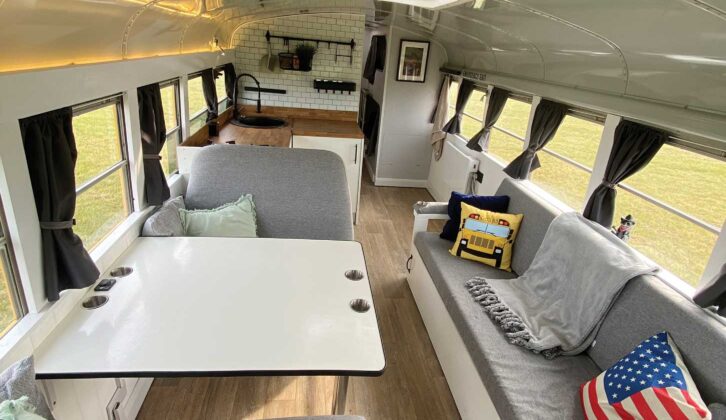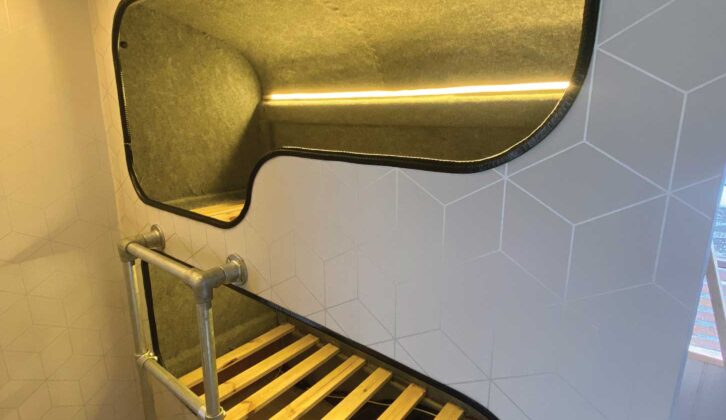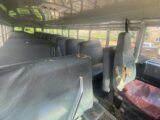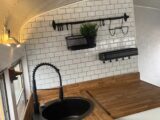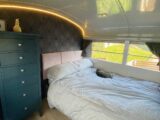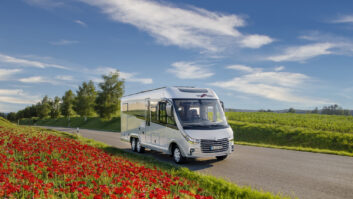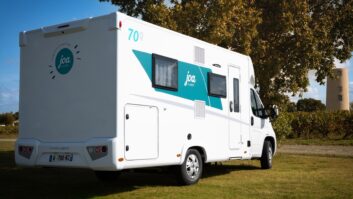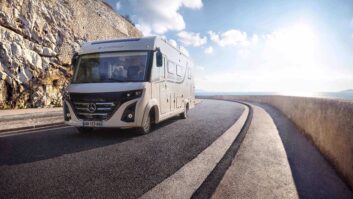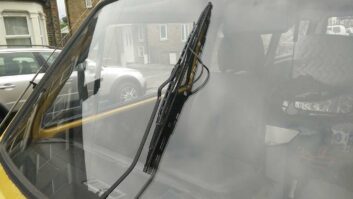Converting your own vehicle is probably an idea that many of us have flirted with, but few people take the dream any further, especially those of us who have no background in the motor trade. Even fewer of us would be likely to take on a major project that involved importing a vehicle from the US. And almost nobody would think of importing and then converting a speciality vehicle, such as an American school bus.
Yet that’s exactly what Niall Seymour did – importing a classic yellow school bus by sea to Southampton, then bringing it to his home in Bexleyheath, in south-east London, a project that we thought was as impressive as converting a double decker bus, as David and Gillian Rivers did.
Niall is married, with two children aged four years and 18 months, and decided to take on the project with a view to enjoying family time camping out in the bus. Although he has never owned a campervan, he has a keen interest in unique or unusual vehicles, including several American cars.
“I like anything that’s a bit odd,” says Niall. “I’ve currently got a military high mobility multipurpose wheeled vehicle – better known as a humvee – it’s a US army truck. I also had a Hummer H2 before, which I converted to six wheels. It was like a six-wheeled pick-up truck. I owned a BMW 840, too, which in my opinion is the best BMW, and before that, an old-school Mini.”
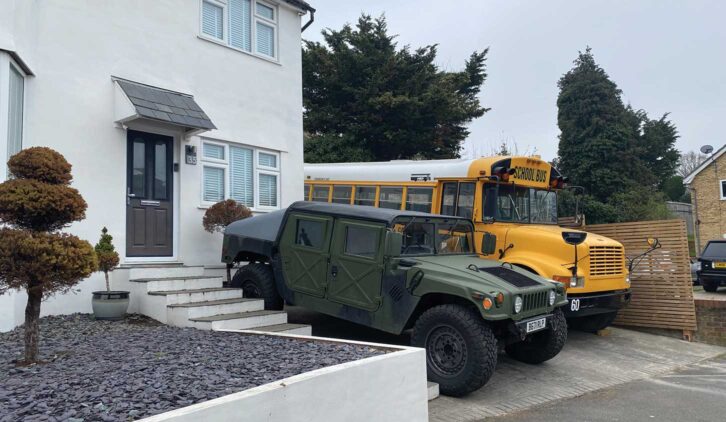
Having enjoyed travel before their kids were born, after the arrival of their first child, Niall and his wife decided they wanted to go camping as a family.
The best campervans offer freedom to explore the world, and this is what motivated Niall and his wife. They were inspired by an episode of Channel 4 series George Clarke’s Amazing Spaces, in which one of the people featured converted an army truck into a campervan and then travelled around the world in it.
Bigger and better
“I didn’t know anything about the buses, but I liked the look of them,” says Niall. “It had to be an iconic American school bus with the longer bonnet [known as a dog-nose hood]. The extended front is where the engine is – that’s what I was looking for.”
Ultimately, he ended up with a 1991 Thomas International 3700, which was used by the Quinlan Independent School District in Quinlan, Texas.
The engine was built by a company called Navistar on behalf of Ford. These vehicles were coachbuilt: the bus is built by Thomas on an International chassis and drivetrain.
Niall nearly bought a newer vehicle, until he realised the financial benefits of importing an older model.
He explains: “I’d been looking for a bus online and originally ordered a newer one, dating from 2004, through Marc, an expat who runs a vehicle import-export company called United Exports.”
“If you want an American car shipped to the UK, he’s the guy! He acts as a middleman – he’ll buy the vehicle, sort out the forms and arrange to have it put in a container and shipped.
“But once I started looking into how to get it from Southampton, where the ship docks, I found out that if you import a bus that’s 30 years older or more, it becomes far more financially viable. You only pay 5% VAT instead of 20%. And you don’t pay any import duty, which you do with a newer bus.
“Also, I would have had to get a tow truck to collect it from Southampton, which would cost the best part of £1000, and I’d need a Class C (HGV) licence to drive it. If a bus is over 30 years old, you can drive it in the UK on a standard car licence.”
Fortunately, Niall was able to cancel that original order before any money had changed hands, a decision that saved him, he reckons, somewhere in the region of £3675.
He started looking around again and in 2022, came across the 1991 Thomas International on Facebook Marketplace. The bus was in Texas and the owner sent Niall some details and a video of it running and being driven.
Niall arranged to have it shipped over to Southampton Docks. He paid £3000 for the bus and £3500 for shipping, taxes and other associated costs – all in all, it cost him £7000 door to door.
The bus has landed
On the day of its arrival in the UK, Niall drove the bus to a garage local to him, where he’d booked it in for an MOT (see: how to help a motorhome pass an MOT).
He had insured it under the chassis number, so it was legal to drive even though it didn’t have a numberplate.
But where on earth in south-east London do you park a bus that weighs 7.45t (7450kg), and is 8ft wide and 37ft long? Fortunately, Niall has a driveway, although he had to have it extended by 2m in order for the bus to fit!
Initially, the bus needed six new tyres (£2000) and a new alternator (the old one had been disconnected and started smoking when Niall reconnected it). He also changed the glow plugs and gave it a service.
“It starts up first time, every time,” says Niall. “There’s no rust – it’s bone dry in Texas, so no rust to worry about. The interior was a bit rough, but I knew I was going to rip out the seats anyway. Once it was all roadworthy and the mechanical bits were done, I arranged to have it registered. As soon as it was registered with the DVLA and was road legal, I started the build.”
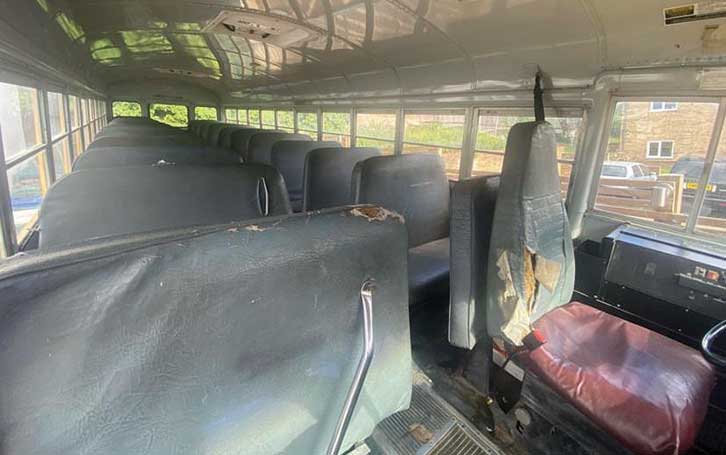
Converting the American school bus
Niall laughs when I suggest that he must be pretty handy to have taken on such an ambitious project, but although he has no background in the motor trade, he used to be an electrician, with skills that had to have held him in good stead.
“I’ve always given everything a go – I feel everyone can do anything, you have to give it a go. I used YouTube for a lot of the plumbing and hot-water system, and years ago, I used to be an electrician, so that was useful.”
The first task of converting the American school bus was ripping out the interior and putting down vinyl flooring, which was easier to fit, lighter and cheaper than laminate.
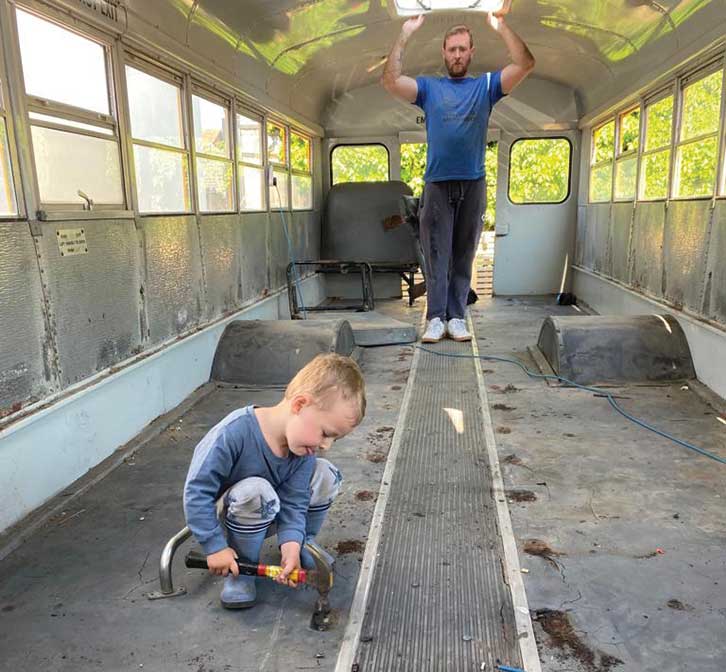
Niall built out a framework for each wall with two by two and two by three wood and built the walls up. He was then able to run through the wiring for the electrics, with places for sockets.
The plumbing was next. He ran in the pipework, making sure there was space below for the water pump, which he installed. In fact, he says, the plumbing gave him “the biggest headache”.
“I was advised to use quite flexible pipework. But it was constantly leaking, so I ended up ripping it all out and putting in a more solid PEX pipe. Apart from that, there was nothing that was really difficult – it just took time to finish the build, nine months in total.”
The conversion is lighter than it would have been with all of the seats in – it was built to carry 45 passengers. Niall used lightweight materials as much as possible, and didn’t tile the washroom or the kitchen. Instead, he used a plastic bathroom sheeting that has a tile effect.
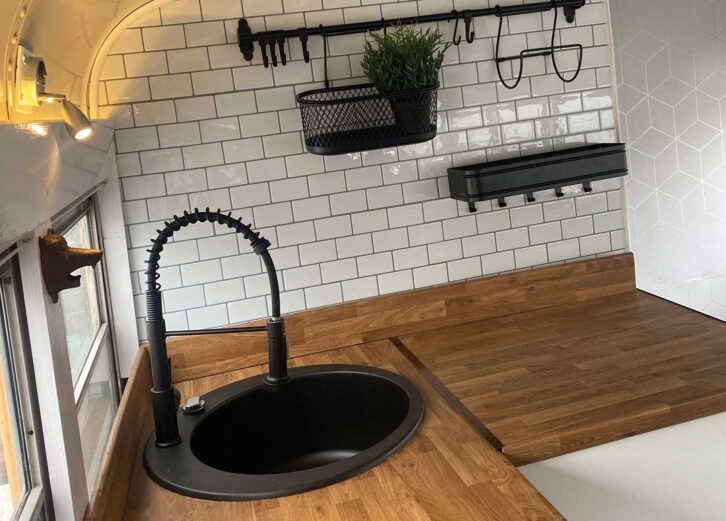
The bus has a 200-litre fresh-water tank and a grey-water tank, a water heater that runs on LPG, two electric heaters, 240V electrics throughout and a kitchen with gas hob and oven.
It’s also fitted with leisure batteries that can power the bus completely, or it can be plugged into the mains.
Luxury liner
By the time Niall had finished converting an American school bus, it was an eye-catching conversion with a double bedroom at the back. Moving towards the front, there is a galley hallway, with a washroom installed on one side and bunk beds fitted on the other.
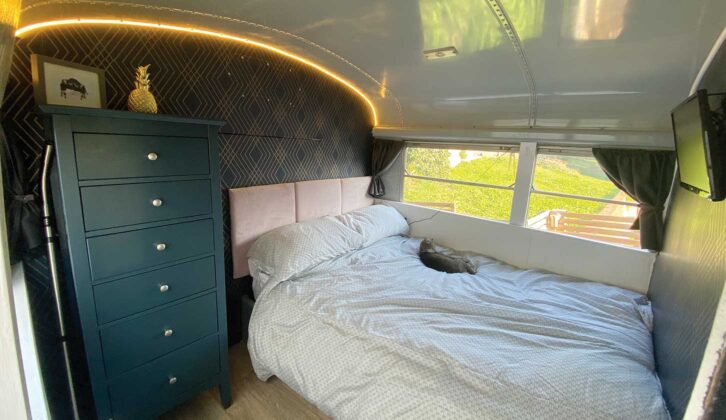
The washroom door opens all the way out and latches onto the side of the bunk, so at night, this area can be used as a separate room, with the beds separated from the living area. There’s a hatch that folds down at the end of the bunk, so you can make it longer if an adult is sleeping there.
The washroom is fitted with a basin, a shower and a Thetford toilet.
Further to the front, the kitchen has a Thetford oven, a two-burner gas hob, a large sink with hot and cold water, and a couple of cupboards. There’s an undercounter fridge, which runs on 240V. Niall says he finds this type of fridge a lot cheaper to maintain than a 12V or gas campervan fridge.
The water pump is under the sink, along with the pipework for the gas and the plumbing.
Further forward still, the dining area accommodates four people. These seats are from the original bus fittings, but have been extended to make them more comfortable, and reupholstered with additional foam.
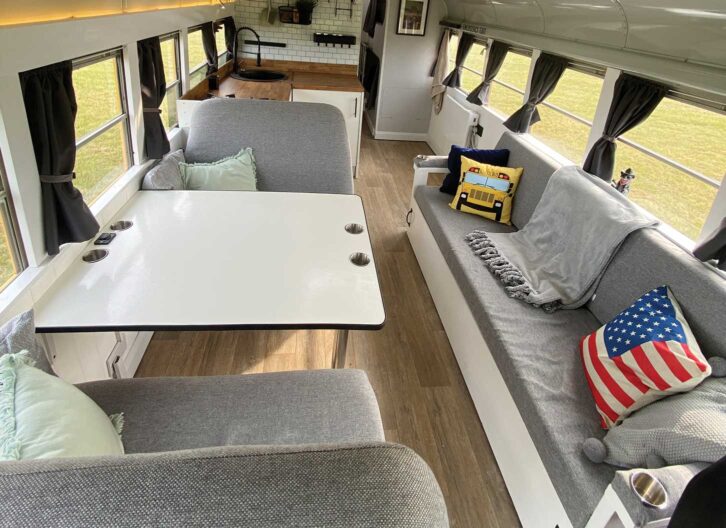
Opposite the table and seats is a sofa bed, which Niall built himself. It extends to provide a standard single-size bed.
Underneath the sofa bed are the electrics, including the converter, the automated switch-over batteries and the fuseboard.
There are enough belted seats for eight passengers and the driver. Niall chose this number because it’s legal to drive a 30-year-old bus on a car licence, so long as you don’t carry more than eight passengers and it’s not for hire and reward.
Trips in the converted school bus
The family are particularly happy with the bunk beds, which turned out better than Niall thought they would. Each bunk has its own lighting, USB and TV. In fact, there are four TVs in the bus – one at the front, one in the bedroom and a multimedia screen for each of the bunk beds.
Everything has been made so that it can be used in more than one way – for example, the main bed is built into the wall to maximise space. In total, the bus sleeps five people.
But where do you take such a large bus, when a lot of campsites don’t want non-standard vehicles? The best campervan sites UK offer excellent facilities, but that doesn’t mean they’ll allow
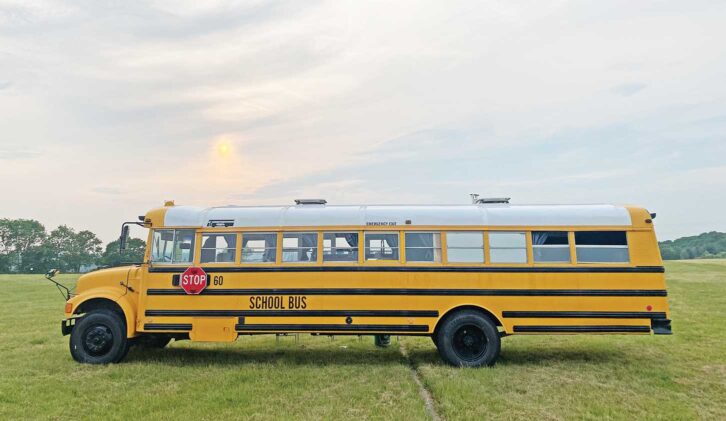
Fortunately, there is a site in Deal, in Kent, where the owner is amenable to its size and likes to see it there. Niall has also taken it to a few car shows, including at Brands Hatch.
The bus certainly turns heads wherever it goes, and is often tagged in posts on social media. Niall started a school bus owners’ club on Facebook and he thinks that pretty much everyone who owns an American school bus in the UK is on there.
“I get a lot of views on Instagram – I’ve had 800,000 for some of the posts on how to do things. Considering I only did it to keep track of what I’d done and built, it’s been quite popular.”
And what about the family’s plans for the future? Niall replies: “I was considering renting it out on a site somewhere, but I haven’t had enough use out of it yet. I’d love to take it to North Wales – but it’s quite hilly there and it doesn’t like hills!”
You can find out more about Niall’s bus conversion on Instagram @YellowBusSixty.
Looking for a way to keep your RV protected from UV rays and water spots? Investing in the best RV wax can help – our guide talks you through our favourite picks.
If you’ve enjoyed reading this article, why not get the latest news, reviews and features delivered direct to your door or inbox every month. Take advantage of our brilliant Practical Motorhome magazine SUBSCRIBERS’ OFFER and SIGN UP TO OUR NEWSLETTER for regular weekly updates on all things motorhome related.
